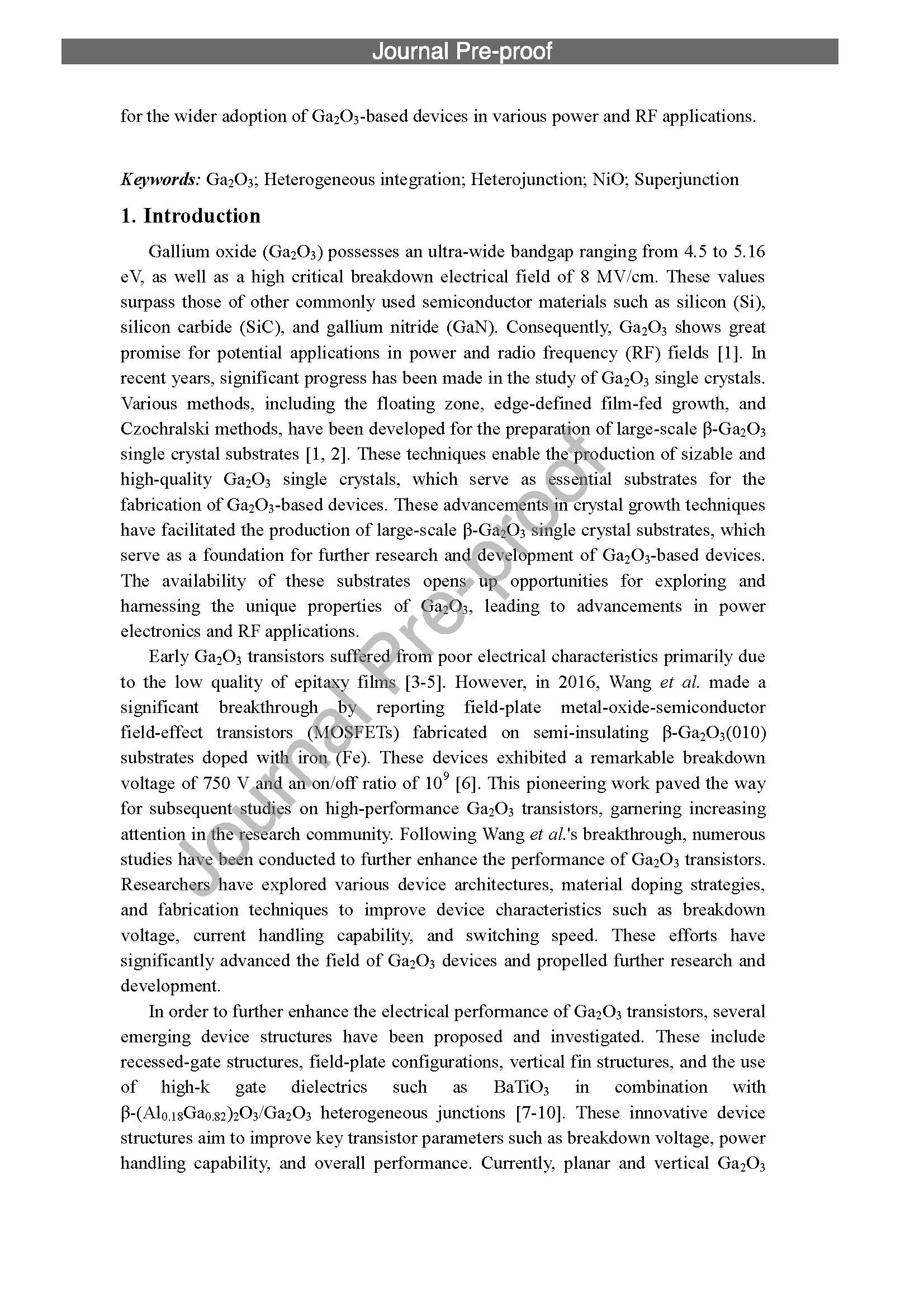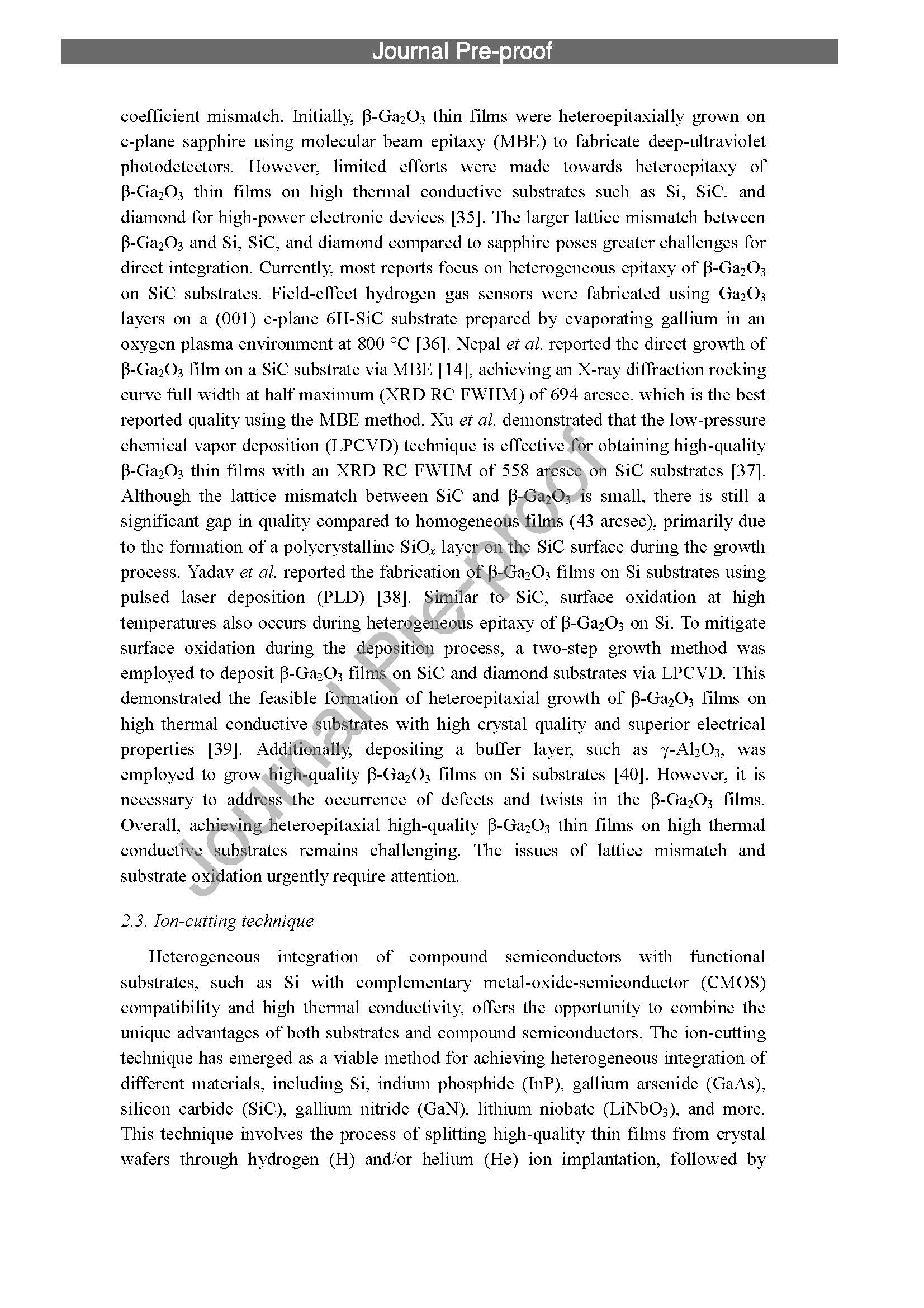
【Member Papers】Gallium oxide (Ga₂O₃) heterogeneous and heterojunction power devices
日期:2023-12-08阅读:595
Researchers from the Xidian University have published a dissertation titled " Gallium oxide (Ga2O3) heterogeneous and heterojunction power devices " in Fundamental Research.
ABSTRACT
Due to its high critical breakdown electrical field and the availability of large-scale single crystal substrates, Gallium oxide (Ga2O3) holds great promise for power electronic and radio frequency (RF) applications. While significant advancements have been made in Ga2O3 material and device research, there are still challenges related to its ultra-low thermal conductivity and the lack of effective p-type doping methods. These limitations hinder the fabrication of complex device structures and the enhancement of device performance. This review aims to provide an introduction to the research development of Ga2O3 heterogeneous and heterojunction power devices based on heterogeneous integration technology. By utilizing ion-cutting and wafer bonding techniques, heterogeneous substrates with high thermal conductivity have been realized, offering a viable solution to overcome the thermal limitations of Ga2O3. Compared to Ga2O3 bulk devices, Ga2O3 devices fabricated on heterogeneous substrates integrated with SiC or Si exhibit superior thermal properties. Power diodes and superjunction transistors based on p-NiO/n-Ga2O3 heterojunctions on heterogeneous substrates have demonstrated outstanding electrical characteristics, presenting a feasible method for the development of bipolar devices. The technologies of heterogeneous integration and heterojunction address critical issues related to Ga2O3, thereby advancing the commercial applications of Ga2O3 devices in power and RF fields. By integrating Ga2O3 with other materials and leveraging heterojunction interfaces, researchers and engineers have made significant progress in improving device performance and overcoming limitations. These advancements pave the way for the wider adoption of Ga2O3-based devices in various power and RF applications.

Fig. 1. The process flow for transferring β-Ga2O3 thin film onto SiC (or Si) by ion cutting. (a)-(b) Implanting H+ into bulk β-Ga2O3 to form the H-rich layer. (c) Wafer bonding of β-Ga2O3 with SiC (or Si), and bonding interfacial layer (IL) can be an amorphous layer or an Al2O3 film. (d) Forming plate-like defects by annealing. (e) Splitting. (f) Surface smoothing by ICP etching or CMP. Fabricated GaOSiC is shown.

Fig. 2. Surface blistering of β-Ga2O3 bulk wafers through H ion implantation. (a) In situ OM images of the surface variation of H-implanted β-Ga2O3 bulk annealed at 480°C, (b) total free energy versus radius of the hydrogen blister with different internal pressures, (c) Arrhenius plot of the blistering time as a function of the annealing temperature, and (d) time for surface blistering versus heating temperature with different values of implantation fluence.

Fig. 3. The XTEM image of β-Ga2O3/SiC heterogeneous integration materials based on different bonding methods. (a)surface activated bonding, (b) Hydrophilic bonding.
Paper Link:https://doi.org/10.1016/j.fmre.2023.10.008



































